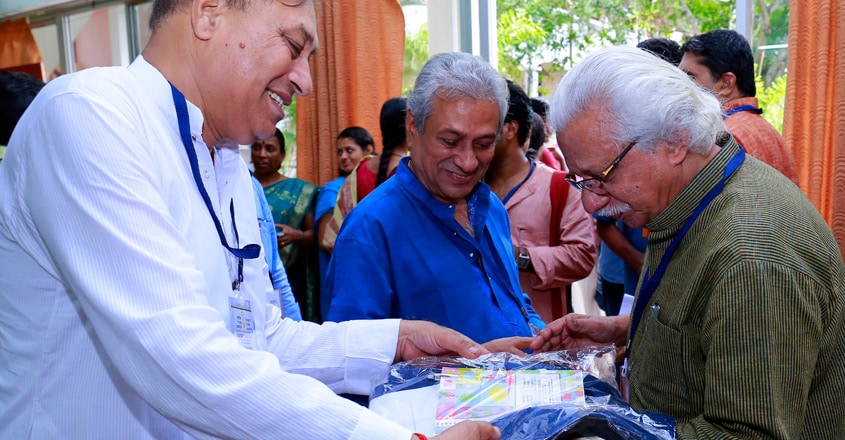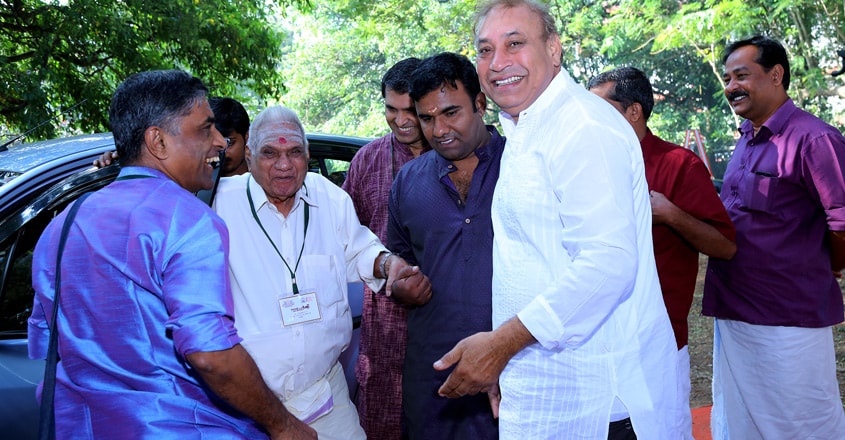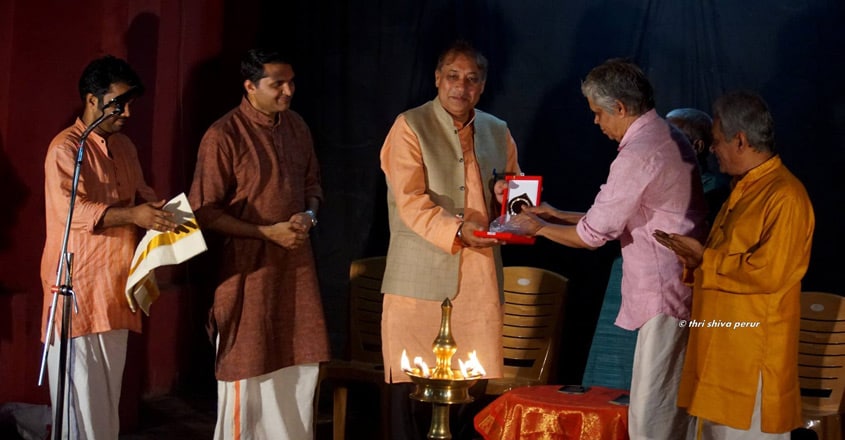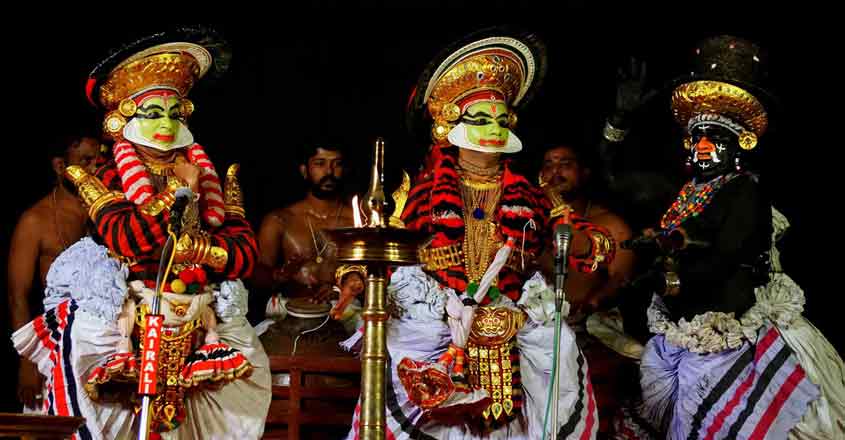Kartarpur to Kerala: Koodiyattam changed this official’s profile

Mail This Article
When Yash Paul reached Delhi from Kartarpur in 1976, he was totally clueless about life as a teenager who had run away from his impoverished Punjab home. Today, into his final week as a government employee in Kerala for the last 10 years, the sexagenarian is happy about retiring after a “beautiful and meaningful” stay in God’s Own Country.
It was in early 2009 that Yash Paul arrived in Thiruvananthapuram as a pivotal officer with the nascent SNA Kutiyattam Kendra that was set up for the promotion of the world’s only surviving ancient Sanskrit theatre. SNA meant Sangeet Natak Akademi, the national-level institution for performing arts. That 1952-founded establishment had given him a job — initially as a typist.
“Well, that was in 1987. Five years after my joining central government service; first with the Ministry of Education,” he recalls, sitting at a verdant venue in Thrissur, the city that houses Kerala Sangeetha Nataka Akademi under the SNA. “Till then, I had been on daily wages.”
Those difficult days stand in stark contrast with Yash Paul’s end-career stint as the assistant with the 2007-opened Kendra. From there, he is to retire tomorrow (November 30, Friday). A farewell is being organised for the official this evening, four days after a team of art enthusiasts and practitioners in Thrissur (also known as Kerala’s cultural capital) honoured him at a similar function that concluded with a presentation of Koodiyattam.
Yash Paul’s early months in the national capital from 1976 were plagued by financial insecurity. He had spent much of Rs 52 he had taken from home. A national Emergency clamped by the then Prime Minister Indira Gandhi further aggravated matters. “You know there was a curb on civil liberties. Also, jobs didn’t come in easily,” trails off Yash Paul, who had deserted his family that lived 15 km away from Jalandhar. “I had left for Delhi after my class VIII. It is no qualification for a decent employment.”

So, after a stint of doing odd jobs in central Delhi’s Gole Dak Khana, Yash Paul began to learn typewriting. “That was alongside working for daily wages with the telecommunications department,” he reveals.
That way, Yash Paul’s subsequent government job break turned out be encouraging. More so, since his joining as a typist with the SNA. Hard work and self-groomed skills earned him noticeability in office, where classical dancer Jayant Kastaur as the Akademi’s secretary in 2007 found in him the ideal hand for office work at the SNA Kendra down south. That move also had the blessings of iconic Kerala theatre-person Kavalam Narayana Panicker (1928-2016), a former head of the Akademi in Thrissur.

The new appointee may not have been exposed much to the 2,000-year-old Koodiyattam, but he had for years been a thorough book-keeper and earnest organiser. “Once the office desk was set up, I prepared a strategy and began working accordingly,” he says.
Yash Paul streamlined the office culture at the SNA Koodiyattam Kendra, according to its present director Ettumanoor P Kannan, also a well-known Kathakali artiste. “There was a phase in between when the institution faced certain problems. If the Kendra weathered it, much of the credit goes to Yash Paul’s impeccable work,” he notes.

Retired bureaucrat S Srinivasan, who is director of performing-arts institution Margi in Thiruvananthapuram, finds Yash Paul as a “dedicated official with pleasing manners”.
Senior Koodiyattam theorist-artist Venu G recalls that he was initially apprehensive about the professional capabilities of Yash Paul. “Soon he disproved it all and went on to earn the trust of the community,” he says.
Adds frontline Koodiyattam exponent-teacher Kalamandalam Sivan Namboodiri: “Seldom have I met with an official who is particularly prompt with post-performance remuneration.” Ammannur Kuttan Chakyar, a master of Chakyarkoothu that is a Koodiyattam-allied form verbally delivering Hindu mythological stories, attributes Yash Paul’s professional eminence to his capacity to make “quick amends at the right time”.

No different is the view of Usha Nangiar, an acclaimed performer of Nangiarkoothu which is a woman’s solo theatre that emerged a millennium ago as an offshoot of Koodiyattam. “No crisis could ruffle Yash Paul. He was peace-loving and would never act bossy,” she says. “What’s more, he made it a point that his family, too, attended Koodiyattam shows with him.”
Noted Koodiyattam artiste Margi Madhu notes Yash Paul had evolved in art appreciation, being able to segregate good shows from ordinary. Adds his wife Indu G, a Nangiarkoothu performer: “Further, he had begun to understand the real grievances of us Koodiyattam people. To him, all artists are equal.”
The retiring official’s wife, Asha Paul, is unhappy that she has to finally leave Kerala. Left to Yash Paul, he claims the state has bowled him over as one that “represents true Indian culture” and exemplifies the country’s conventional spirit of respecting women. As for Koodiyattam, “there are 113 artists right now (in the SNA files). I am waiting for the figure to double.”

As winter peaks on the northern plains, Yash Paul and Asha, parents of two young men, are readying to resettle in their modest flat in Delhi — 370 km southeast of Kartarpur.

